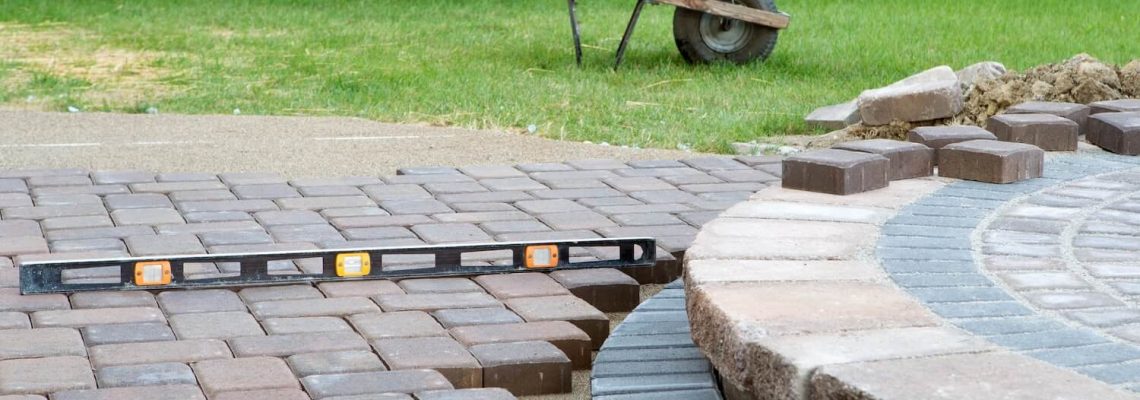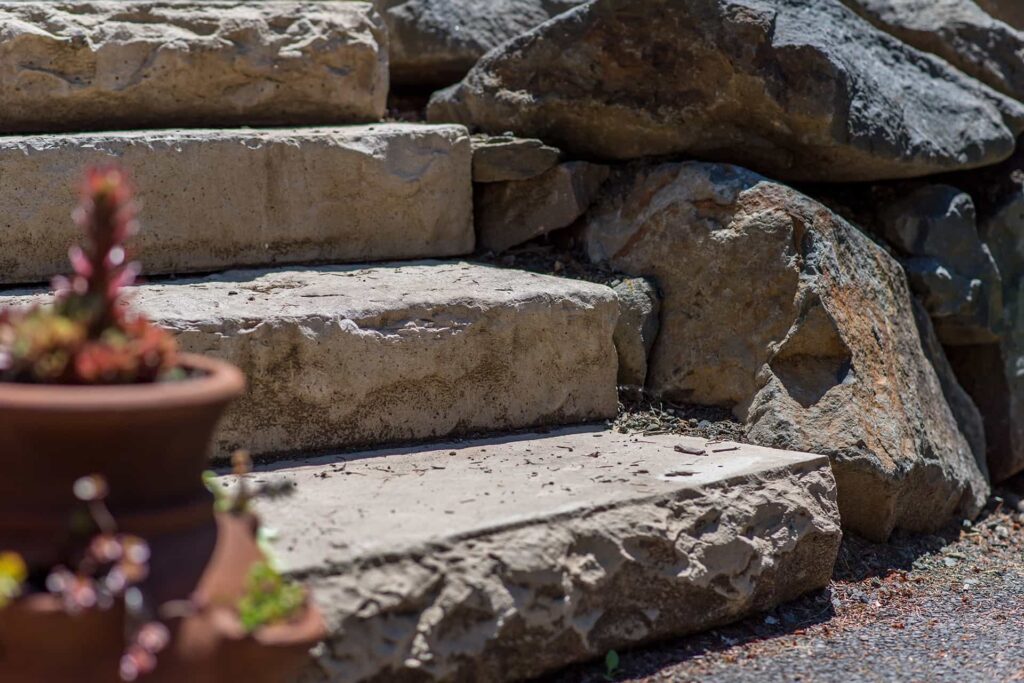Pavers are a popular choice for enhancing outdoor spaces due to their durability, versatility, and aesthetic appeal. From driveways and walkways to patios and garden paths, paver installations can significantly improve the functionality and appearance of your property. However, the timing of your paver installation project plays a crucial role in determining the success and longevity of the project. This comprehensive guide delves into the seasonal considerations for professional paver installation, offering insights to help you choose the best time for this endeavor.
Understanding Paver Installation
Before diving into the seasonal aspects, it’s important to understand the key components of a professional paver installation project:
1. Site Preparation:
- Clearing and Grading: The first step involves removing any existing vegetation, debris, or old surfaces. The site is then graded to ensure a level base, which is critical for preventing uneven settling of pavers.
- Soil Compaction: Proper compaction of the soil is essential to provide a stable foundation. This involves using specialized equipment to compress the soil and eliminate air pockets that could lead to shifting or settling.
2. Base Material Installation:
- Base Layer: A layer of crushed stone or gravel is spread and compacted to create a solid base. This layer helps with drainage and provides stability.
- Sand Layer: A layer of sand is then spread over the base layer. This provides a level surface for the pavers and helps with alignment.
3. Edge Restraints:
- Installation of Edging: Edge restraints are installed to keep the pavers in place and prevent them from shifting over time. These restraints are typically made of metal, plastic, or concrete and are secured in place along the edges of the paved area.
4. Paver Laying:
- Pattern and Arrangement: The pavers are laid according to the desired pattern. Professional installers use precise measurements and alignment techniques to ensure a uniform appearance and correct placement.
5. Joint Filling:
- Filling Joints: Once the pavers are laid, the joints between them are filled with sand or polymeric materials. This helps to stabilize the pavers and prevent weed growth.
6. Compaction:
- Final Compaction: The entire surface is compacted to ensure that the pavers are firmly set and level. This step is crucial for preventing uneven surfaces and ensuring long-term durability.
Seasonal Considerations for Paver Installation
1. Spring: A Season of Renewal
Advantages:
- Moderate Temperatures: Spring offers moderate temperatures, which are ideal for paver installation. The weather is typically not too hot or too cold, providing a favorable environment for setting materials and ensuring proper curing.
- Optimal Conditions for Curing: Spring rain can be beneficial for the curing process, especially for concrete pavers. It helps prevent rapid drying that can lead to cracking. Additionally, spring’s gradual warmth allows for a more controlled setting of materials.
- Preparation for Summer: Installing pavers in the spring provides ample time to prepare your outdoor space for summer activities and gatherings. It allows you to enjoy your newly paved area during the peak season.
Considerations:
- Rainy Weather: Spring can be unpredictable, with occasional heavy rains that may delay installation. Proper site preparation, including ensuring good drainage, is essential to handle unexpected weather conditions and prevent delays.
2. Summer: Peak Season Challenges
Advantages:
- Extended Daylight: Summer offers extended daylight hours, providing more time for professional installers to complete the project. This can be particularly beneficial for larger installations that require more time.
- Dry Conditions: Generally dry summer conditions are ideal for setting pavers and avoiding issues related to excessive moisture. Dry weather helps ensure that the base materials and pavers set correctly without interference from rain.
Considerations:
- High Temperatures: Extreme heat can pose challenges for paver installation. High temperatures can affect the curing and setting of certain materials, especially concrete pavers. Installers need to manage the timing of the installation carefully to avoid complications such as rapid drying or deformation of materials.
- Increased Demand: Summer is a peak season for home improvement projects, which may lead to longer waiting times for scheduling and potentially higher costs due to increased demand for professional services. Planning and booking in advance can help mitigate these issues.
3. Fall: Ideal Conditions with Some Caveats
Advantages:
- Cooler Temperatures: Fall provides cooler temperatures that are ideal for paver installation. The weather is generally stable, which helps with the setting and curing processes, reducing the risk of issues associated with extreme temperatures.
- Favorable Conditions for Materials: Fall offers a balance between warm and cold conditions, making it easier for materials to set and cure properly. This helps prevent problems like cracking or shifting that can occur with rapid temperature changes.
Considerations:
- Shorter Days: Fall brings shorter daylight hours, which can limit the time available for installation work. This may extend the project timeline and require careful scheduling to ensure completion before winter.
- Increased Rainfall: Fall can bring increased rainfall, which may pose challenges for installation. Proper site preparation and drainage are crucial to manage excess water and prevent delays or issues with the installation process.
4. Winter: A Season of Contrasts
Advantages:
- Lower Costs: Winter can be a less busy season for paver installation, potentially resulting in lower costs and better availability of professional services. This can provide opportunities for cost savings and more flexible scheduling.
- Dry Air: In some regions, winter air can be dry, which may benefit the setting of certain materials, particularly if temperatures are above freezing. Dry conditions can help prevent issues related to excessive moisture during the installation process.
Considerations:
- Cold Temperatures: Cold temperatures can create challenges for paver installation. Freezing conditions can affect the curing of materials and lead to issues such as the freezing of water used in base materials or the expansion and contraction of pavers. Ensuring that the ground is properly prepared and scheduling installation during milder periods can help mitigate these issues.
- Snow and Ice: Snow and ice can create challenging conditions for installation and may cause delays. Proper planning and scheduling are essential to avoid weather-related issues and ensure a successful installation. Additionally, snow removal and ice management can impact the progress of the project.
Factors to Consider When Choosing
1. Local Climate and Weather Patterns
Understanding your local climate and typical weather patterns is crucial in determining the best time for paver installation. If you live in an area with severe winters, unpredictable spring rains, or extreme summer heat, it’s important to plan your installation during a season with more stable conditions. Consulting with local professionals who are familiar with regional weather patterns can provide valuable insights.
2. Site Conditions
Assess the condition of your site, including soil moisture, drainage, and existing vegetation. If your site is prone to pooling, poor drainage, or other issues, address these concerns before installation. Proper site preparation is essential regardless of the season and can help ensure a successful and long-lasting paver installation.
3. Project Scope and Timeline
Consider the scope of your project and how much time you can allocate for the installation. Larger projects may require more time and careful planning, so scheduling during a season with favorable weather conditions can help ensure a smoother process. Additionally, consider any upcoming events or deadlines that may influence your timing.
4. Availability of Professional Services
Professional installers may have varying availability based on the season. Summer is often a busy time for home improvement projects, while winter may offer more flexibility. Planning ahead and booking your installation well in advance can help secure the best timing and pricing for your project.
5. Budget Considerations
Budget is a key factor in any home improvement project. Seasonal variations in demand can impact costs, with peak seasons potentially leading to higher prices. Assessing your budget and exploring cost-saving opportunities, such as scheduling during off-peak times, can help you manage expenses effectively.
Consulting with Professional Installers
Engaging with a professional paver installation company can provide additional insights and recommendations tailored to your specific needs and location. Experienced installers can assess your site conditions, offer advice on the best timing based on your local climate, and ensure that all aspects of the installation process are handled efficiently.
Key Questions to Ask Professional Installers:
- What is the best season for paver installation in my area?
- How will local weather conditions affect the installation process?
- What steps will be taken to ensure proper site preparation and drainage?
- Are there any specific considerations or recommendations based on the scope of my project?
Conclusion
Choosing the right time for paver installation is crucial for achieving a successful and durable outcome. Each season offers its own advantages and challenges, and understanding these factors can help you make an informed decision. By considering your local climate, site conditions, project scope, and professional availability, you can determine the optimal timing for your paver installation project.
Consulting with a professional paver installation company will provide you with expert guidance and ensure that your project is completed to the highest standards. With careful planning and the right timing, you can enjoy a beautifully paved outdoor space that enhances your property and provides lasting value for years to come.


